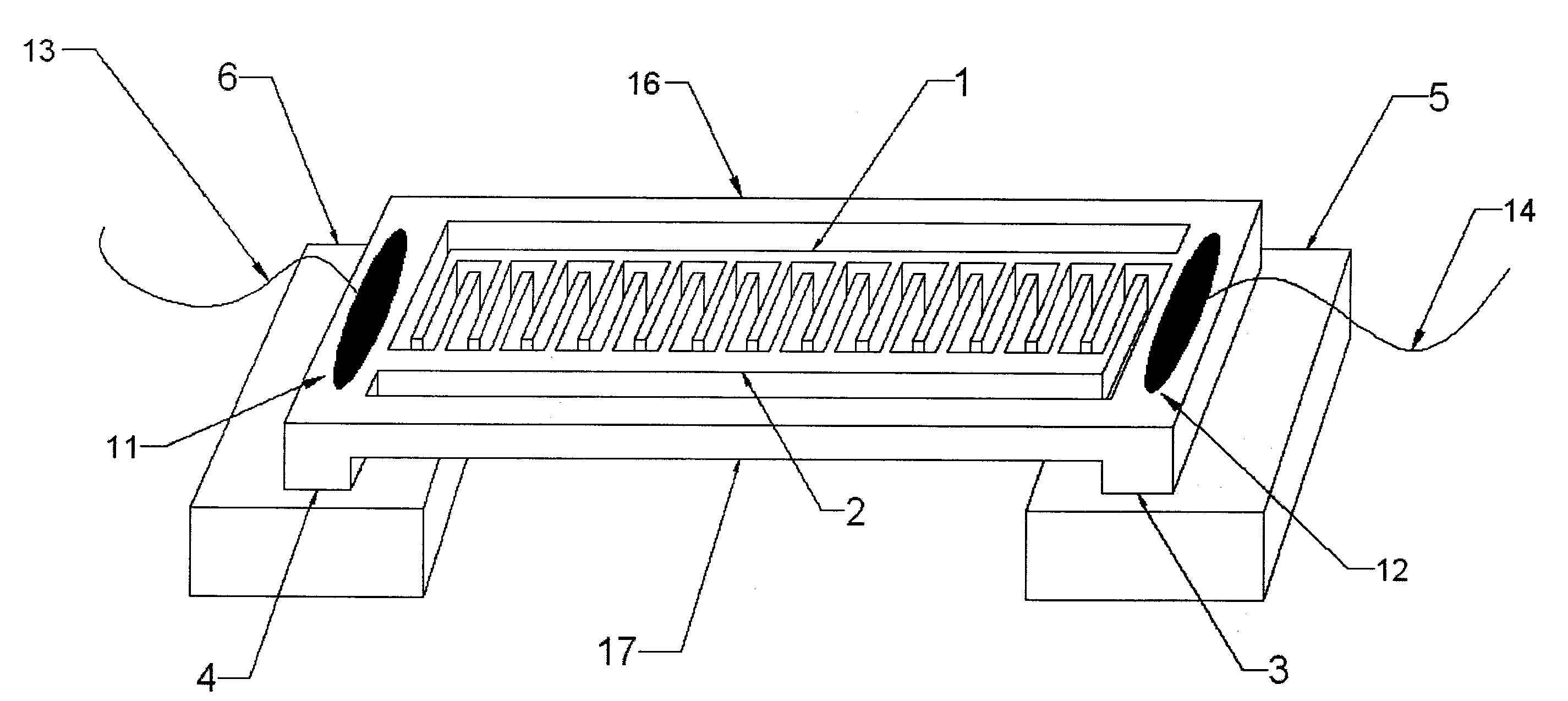MEMS Capacitive Bending and Axial Strain Sensor
a capacitive bending and axial strain technology, applied in the field of strain sensors, can solve the problem of very low power consumption of sensors, and achieve the effect of low power and easy incorporation into current semi-conductor fabrication processes
- Summary
- Abstract
- Description
- Claims
- Application Information
AI Technical Summary
Benefits of technology
Problems solved by technology
Method used
Image
Examples
Embodiment Construction
[0025]The present invention will now be described more fully with reference to the drawings, in which illustrative embodiments are shown.
[0026]FIG. 1 is an perspective view of the three-dimensional micro-electromechanical-systems MEMS capacitive bending and axial strain sensor before it is affixed to a flat substrate in which the movable silicon comb structures 1, 2 containing the suspended interdigitated fingers are fabricated using conventional semiconductor fabrication techniques. Each comb structure 1, 2 is elevated by an anchor 3, 4 incorporated at the end the comb structure 1, 2. A glass pad 5, 6 is anodically bonded to the bottom of each anchor 3, 4 to provide electrical isolation from the substrate and to increase the distance from the substrate to the plane of the interdigitated fingers to improve sensitivity. Electrically conductive epoxy 11, 2 is applied to the top of each anchor 3, 4. Electrical leads or wires 13, 14 are placed in the electrically conductive epoxy 11, 12...
PUM
| Property | Measurement | Unit |
|---|---|---|
| relative permittivity | aaaaa | aaaaa |
Abstract
Description
Claims
Application Information
 Login to View More
Login to View More - R&D
- Intellectual Property
- Life Sciences
- Materials
- Tech Scout
- Unparalleled Data Quality
- Higher Quality Content
- 60% Fewer Hallucinations
Browse by: Latest US Patents, China's latest patents, Technical Efficacy Thesaurus, Application Domain, Technology Topic, Popular Technical Reports.
© 2025 PatSnap. All rights reserved.Legal|Privacy policy|Modern Slavery Act Transparency Statement|Sitemap|About US| Contact US: help@patsnap.com



